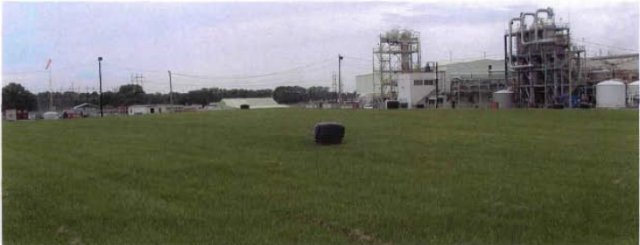Superfund Sites in Reuse in Kentucky
If you are having trouble viewing the map in your browser, click the 'View larger map' link below
B.F. GOODRICH

The 250-acre B.F. Goodrich (BFG) Superfund site is in Calvert City, Kentucky. Several chemical plants have been on-site since the mid-1950s. BFG disposed of waste in a landfill on-site from 1965 to 1973 and a burn pit on-site from 1970 to 1983. Until the 1980s, operators put chemical wastes in unlined ponds where contaminants migrated into the Tennessee River, soil, and groundwater. A site inspection in 1980 found a leaching problem along the north side of the landfill. EPA added the site to the National Priorities List (NPL) in 1983. EPA’s initial response addressed a former landfill and burn pit. EPA and potentially responsible parties oversaw groundwater removal and treatment, landfill cover improvements, and land use restrictions. Cleanup also included removal, treatment, and capping of contaminated soil in the former burn pit area. In 2009, the scope of EPA’s response expanded to include the entire 200-acre chemical plant. After investigations, EPA selected the final remedy in 2018. It includes a 3-mile sub-surface barrier wall around onshore contamination, groundwater collection and treatment, recovery of non-aqueous phase liquid (NAPL) from accessible onshore areas, dredging of contaminated sediments from the barge slip, closure of two ponds, recovery of NAPL from beneath the Tennessee River and treatment of the groundwater plume beneath the river. In the 1990s, a chemical company purchased most of the site, including the landfill and plant facilities. The company runs a plastics production facility on-site. In 2000 and 2001, two chemical producers purchased some of the site and currently operate chemical plants on-site.
Last updated September 2024
As of December 2024, the EPA had data on 4 on-site businesses. These businesses employed 141 people and generated an estimated $284,052,000 in annual sales revenue. For additional information click here.
For more information:
BRANTLEY LANDFILL
The 35-acre Brantley Landfill Superfund site is in Island, Kentucky. From 1978 to 1980, Barmet Aluminum Corporation (now Novelis) ran a landfill on-site. Landfill operations resulted in the contamination of air, groundwater, sediment, soil and surface water. The Kentucky Division of Air Pollution Control found contamination in 1979. EPA added the site to the National Priorities List (NPL) in 1990. EPA, the Kentucky Department for Environmental Protection and Novelis, the site’s potentially responsible party, investigated conditions, capped the landfill, put erosion control measures in place, restricted site access and sampled groundwater. EPA took the site off the NPL in 2022. Two homes remain on-site and are used for treating the leachate from the site.
Last updated September 2024
As of December 2024, the EPA did not have economic data related to on-site businesses, or economic data were not applicable due to site use. For additional information click here.
For more information:
CALDWELL LACE LEATHER CO., INC.
The Caldwell Lace Leather Company, Inc. (CLL) Superfund site is in Auburn, Kentucky. It includes a 16-acre landfill and 41 acres of pastureland. From 1972 to 1985, CLL ran a leather tannery at the site. Tanning processes generated wastewater sludge containing chromium. The company disposed of sludge, dyes and solid waste on-site. A state inspection in 1982 found that site activities and improper waste handling had contaminated soil and groundwater. EPA added the site to the National Priorities List (NPL) in 1990. In 1994, EPA determined that federal cleanup actions were not needed to protect human health or the environment. EPA recommended either the landowner or the state conduct surface water monitoring, maintain the landfill cover and put land use restrictions in place. EPA plans to delete the site from the NPL. A cell phone communications tower is on part of the site.
Last updated September 2024
As of December 2024, the EPA did not have economic data related to on-site businesses, or economic data were not applicable due to site use. For additional information click here.
For more information:
NATIONAL ELECTRIC COIL CO./COOPER INDUSTRIES
The 3.5-acre National Electric Coil Co./Cooper Industries Superfund site is in Dayhoit, Kentucky. The National Electric Coil Company ran an industrial equipment rebuilding and remanufacturing facility on-site from 1951 to 1985. Facility operations continued during several changes in ownership until 2010. They included electrical motor repair work and rebuilding of hydraulic systems for the coal industry. Improper disposal practices resulted in contamination of groundwater and soil. In 1989, a routine well sampling event found contaminated drinking water. The parties responsible for the contamination connected affected homes to the public water supply. EPA added the site to the National Priorities List (NPL) in 1992. Cleanup is underway. Activities include treating contaminated groundwater. Groundwater use is restricted on-site. An automobile salvage yard is active on-site.
Last updated September 2024
As of December 2024, the EPA had data on one on-site business. This business employed one person and generated an estimated $68,000 in annual sales revenue. For additional information click here.
For more information:
TRI-CITY DISPOSAL CO.
The Tri-City Disposal Company Superfund site is in Shepherdsville, Kentucky. From 1964 to 1967, the Tri-City Disposal Company used a 57-acre landfill on the 349-acre property. Louisville-area industries disposed of liquid wastes, lumber scraps and fiberglass insulation materials at the site. Disposal activities contaminated a tributary of the Brushy Fork Creek, two springs, groundwater and soil. EPA added the site to the National Priorities List (NPL) in 1989. Cleanup activities included groundwater use controls, treatment of contaminated water and long-term monitoring of groundwater, surface water, sediment and ecology. In 2012, cleanup contractors buried soil contaminants under a soil cover on-site. A family owns most of the site and they maintain two homes and a barn on-site. They also use the site to farm and graze animals.
Last updated September 2024
As of December 2024, the EPA did not have economic data related to on-site businesses, or economic data were not applicable due to site use. For additional information click here.
For more information:
